What does it look like when your horse is bored? What behaviors indicate equine boredom, and why do you need to do something about it? Let’s look at the ways to tell if your horse needs more mental or physical stimulation, and how you can help when your horse is bored.
How to Tell If Your Horse is Bored
What does boredom look like in horses? Boredom happens when a horse doesn’t have enough stimulation or things to do. It probably feels similar to your horse as it does to you – it’s not a fun time!
A horse feels boredom on the inside, but shows it on the outside. Various behaviors and habits are indicators. The signs and signals of a bored horse can be obvious, or subtle and hard to detect. Each horse may show their boredom differently – and the signs that your horse is bored might vary from day to day.
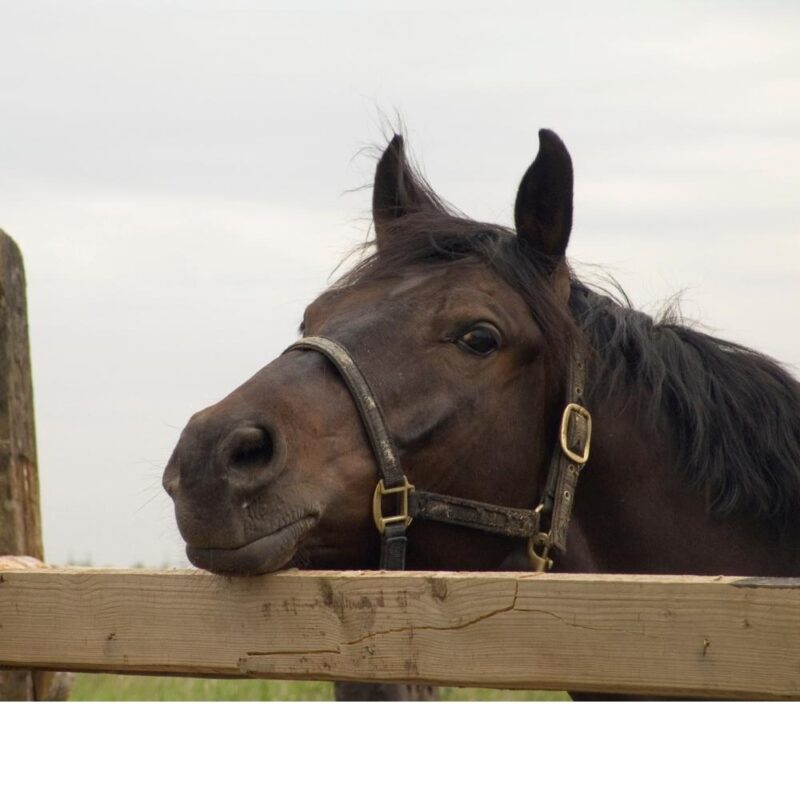
Equine boredom is a symptom of not enough stimulation, choice, or variety in the environment. If it looks like you have a bored horse on your hands, it’s important to figure out why. Then, you can work to improve their situation.
Why Is It Important to Know If Your Horse is Bored?
Boredom can cause serious behavior problems, and can lead to injuries or damage to property. It’s also a sign of a problem with your horse’s mental wellbeing.
Think about how you feel when you’re bored and can’t do anything about it. It’s not the same feeling as relaxation or laziness – think of the kind of boredom you feel when you’re stuck in a long line or on hold with customer service. This kind of boredom causes tension and anxiety. If you can’t get out of the situation, you’ll probably start to feel frustrated and angry.
Your horse experiences the same emotions when they’re bored. Boredom happens when your horse can’t do anything to relieve monotony. Without enough stimulation, a bored horse can become frustrated, anxious, hyperactive, or even depressed. Your horse looks to you to detect the signs of boredom and make the changes needed for them to feel better. Preventing or relieving boredom is part of being a responsible horse owner.
So what are the signs that your horse is bored?
Signs and Symptoms of Boredom in Horses
The Bored Horse #1: Listless and Unmotivated
Chronically bored horses may find it difficult to engage emotionally or physically when given the opportunity. To cope with a chronic lack of stimulation, some horses seem to retreat inside their own minds and become withdrawn. Even when they get a relief from boredom – like leaving the stall – it’s hard for them to feel energetic.
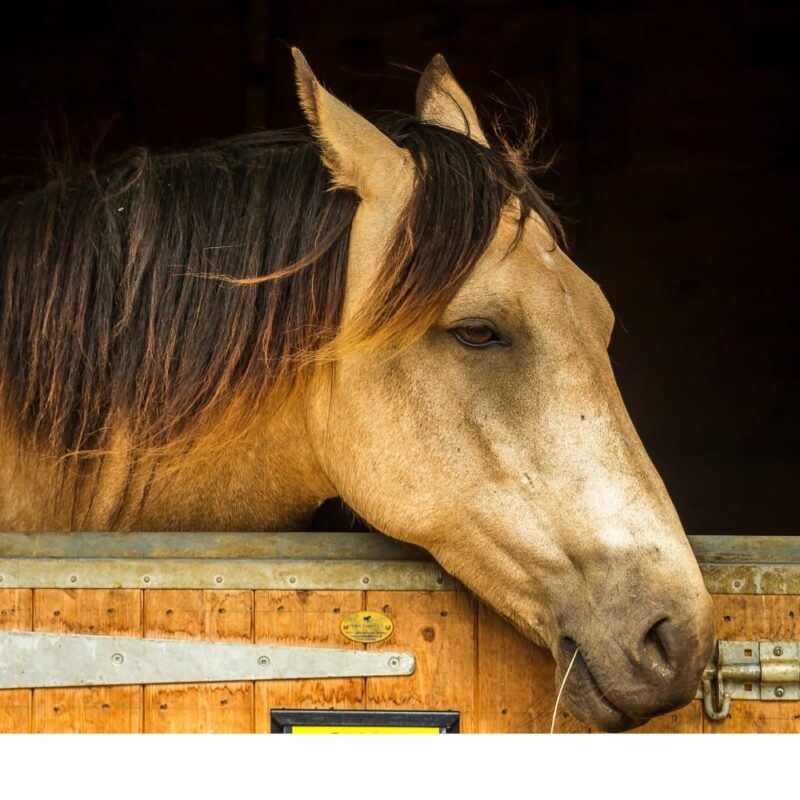
If your horse has dull, depressed body language and doesn’t seem interested in doing much when you bring them out of the stall, that’s a big red flag. Note that a sudden loss of energy or behavior change can signal an illness or medical problem. Always involve your vet if your horse seems fine one day and depressed the next. But if listlessness and low energy have become your horse’s normal, they might be suffering from chronic boredom.
The Bored Horse #2: Frustrated and Aggressive
A surprising sign of equine boredom can be irritability and aggression. If their environment and routine lacks the right kind of stimulation, boredom can make your horse frustrated. Then when you interact with them, that frustration can bubble to the surface as irritable behavior.

A horse frustrated and irritated by boredom may greet you with ears pinned, a wide stare, and other assertive behaviors. They may turn away from you or even threaten a nip or kick.
It’s surprising and counterintuitive, because we know that interaction would relieve the boredom. But just as when you feel frustrated, an irritated horse doesn’t always show good judgement. If your horse is angry as a result of boredom, they may take that negative emotion out on you.
It’s important to note that aggressive behaviors like threatening body language, biting, or kicking are often signs of pain or discomfort. Fear can also cause aggression. It’s important for your horse’s welfare to figure out what’s causing their frustration – anger has a cause, and doesn’t appear out of nowhere. When you’ve checked for physical pain, fear, or aggression as form of saying “no,” consider frustration and boredom as a potential cause for an unpleasant attitude.
The Bored Horse #3: Hyperactive and Anxious
Sometimes, the excess energy caused by boredom expressed itself as anxiety and hyperactivity. If your horse is consistently too fresh under saddle or is difficult to handle after stall time, they may have too much pent-up energy resulting from boredom.
After all, your horse’s wild ancestors spent all day doing something – grazing, exploring, being social, even running away. Boredom is the result of not being able to do these normal equine behaviors. If your horse is bored, their energy can rocket to the surface when they get stimulation or a change of scenery.
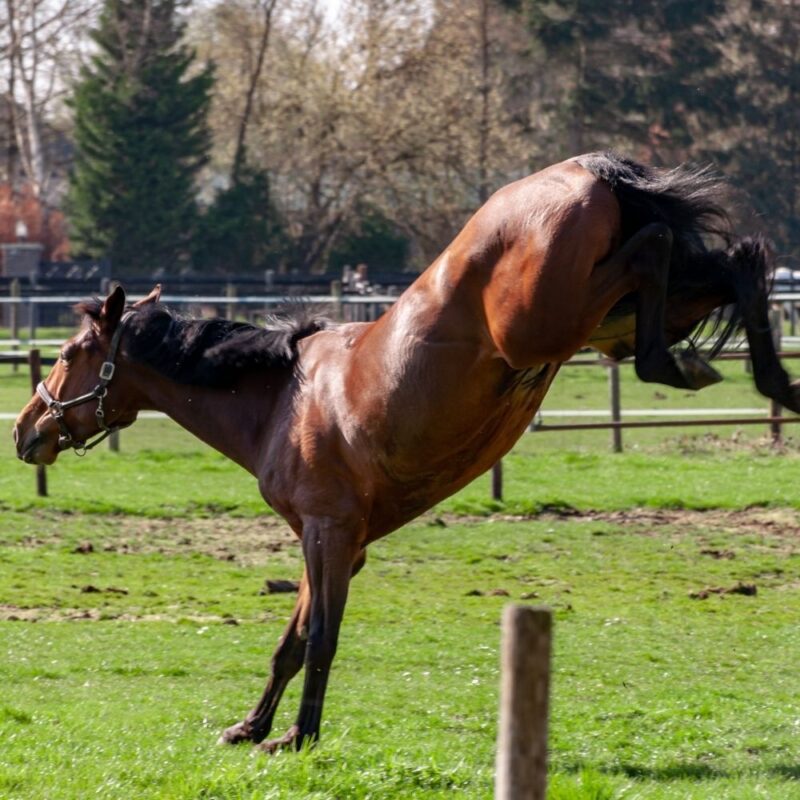
A bored horse might seem fine in their stall or paddock but become hyper or prone to misbehavior when they come out. They might also seem extra fearful, tense, or spooky when out of the stall. If this sounds like your horse, addressing the boredom is an important step in making your horse feel more comfortable and relaxed. Relieving boredom-based anxiety can also improve undersaddle behaviors and make spending time with your horse more fun for both of you.
The Bored Horse #4: The Barn Breaker
Destructive behaviors are a good indication that your horse is bored. If their mental and emotional needs aren’t met, they can seek stimulation in ways that damage property.
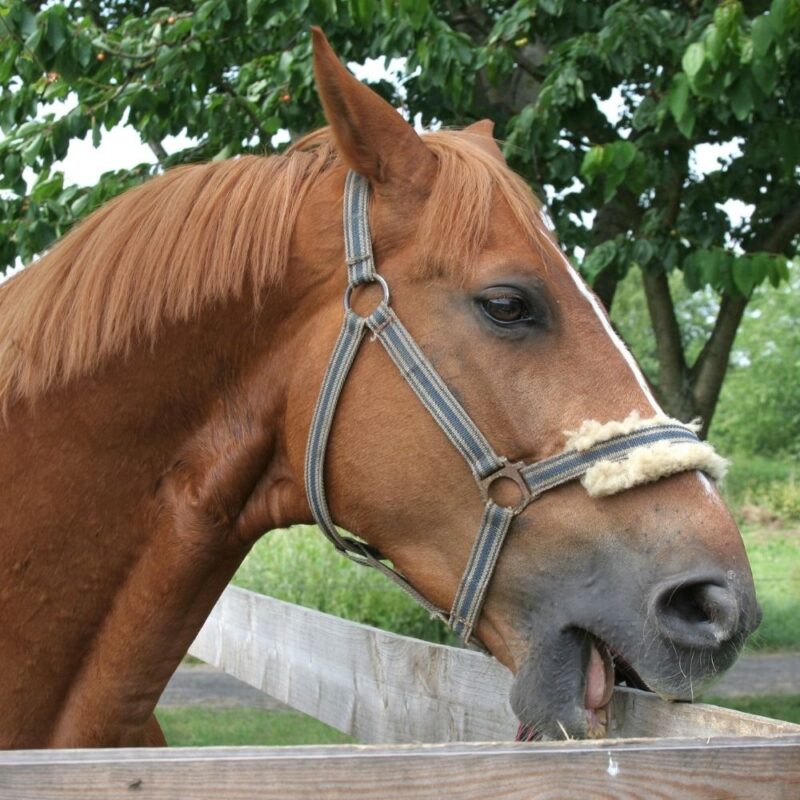
Boredom based destructive behaviors are most common in stalls, but also occur during turnout. To create stimulation and sensory input, horses may rub fences or walls excessively or lick stall surfaces. A bored horse may gnaw or bite wood, especially fence boards. In some cases, horses relieve boredom by kicking or pawing at stall walls. Stall kicking gives a horse physical sensation, and lets them have a little bit of choice and control by making noise. But it’s a destructive and dangerous behavior.
Chewing, kicking, pushing down structures and other destructive behaviors can be signs that of a bored horse that needs more stimulation or variety.
The Bored Horse #5: Stereotypical Behaviors (Weaving, Cribbing, Self Biting)
Stall vices are a common and easy to recognize sign of a bored horse. A “stall vice” is another term for a stereotypical behavior, which is a natural behavior that becomes repetitive and doesn’t serve a clear purpose.
Examples of stall vices that may be caused by boredom include weaving, cribbing, head nodding or tossing, compulsive licking, and even self-mutilation like biting at the chest. These behaviors may help the horse to self-regulate or provide sensory stimulation. But stereotypical behaviors can edge out other important behaviors and become compulsive, and some of them are forms of self-harm.
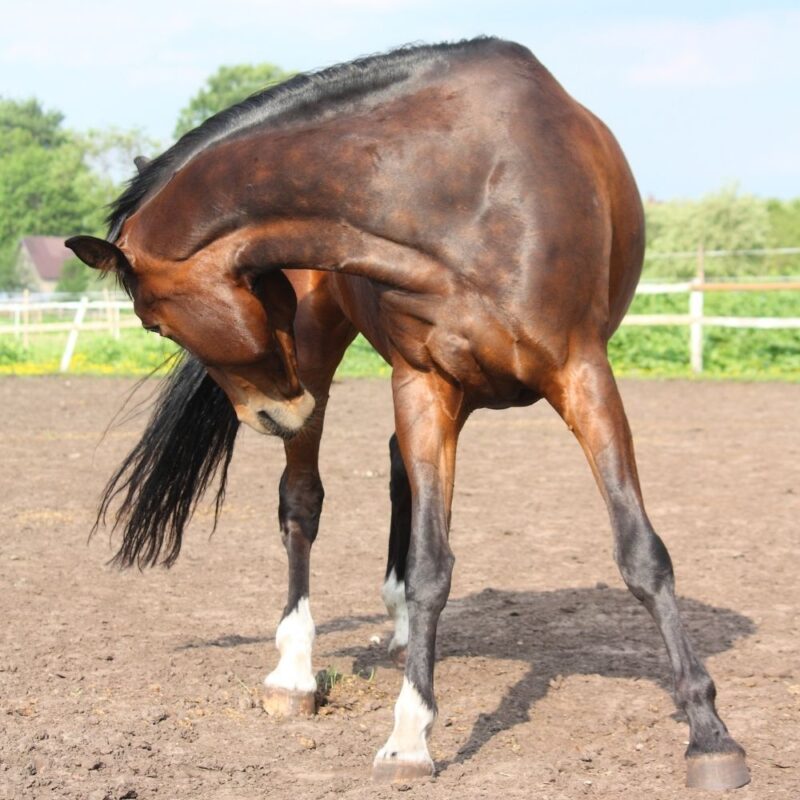
If your horse has or begins to develop a stereotypical behavior, it may be a sign that your horse is bored. Boredom isn’t the only cause of stall vices, but it’s often a contributor. Stereotypical behavior can be a signal that something about your horse’s situation or routine is bothering them.
Stereotypical behaviors can be very difficult to eliminate once established, so if you start to notice a vice developing, take action right away. Immediately work to find the cause, enlisting a veterinarian and behavior consultant if necessary. Some stereotypical behaviors are worsened by pain it the body, like ulcers. Rule out physical problems in addition to looking at boredom as a cause.
What Do I Do Help with Equine Boredom?
All horses may show signs of boredom from time to time. Being bored for short periods, like when waiting for an appointment or briefly spending time in a stall, is normal and not harmful. But if these descriptions match your horse, it’s important to recognize that boredom could be to blame.
Making sure your horse’s needs for forage, friends, and plenty of turnout is a good first step. Make sure your horse’s environment provides the Five Opportunities to Thrive for good welfare.
Wherever you can, give your horse opportunities to simply be a horse and express natural behaviors. Enrichment of all kinds can help! And lastly, don’t hesitate to bring on a professional behavioral consultant if the symptoms persist. Managing the chronically bored horse can be challenging, but success is possible.
Enrichment for the Bored Horse
It’s a great idea to provide enrichment for horses to help relieve boredom. The best options for the bored horse are enrichment items that encourage natural behavior.
For health, a horse shouldn’t go without forage. Grazing helps occupy the horse’s mind and relieves stress, so make sure to provide hay whenever you bring your horse into a stall. A hay net with small holes is a great way to encourage slow, steady grazing.

Food puzzles and slow feeders are great for bored horses. They keep your horse’s mind engaged and provide a fun way to seek food. If your horse likes toys, a rotation of stall toys can help prevent boredom. Add toys and puzzles throughout the day, and change them frequently so that they stay fun and fresh.
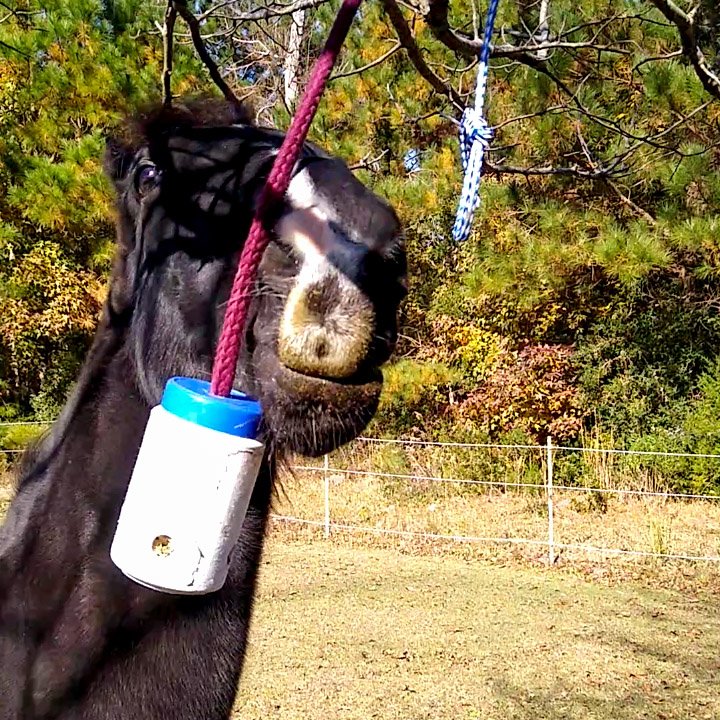
Don’t forget that friends are great for relieving boredom. If your horse needs to spend time in a stall, bring in a close equine friend. Having a neighbor can help your horse stay occupied and engaged instead of bored.
More Enrichment Ideas for Bored Horses
All enrichment is good for horses, but some puzzles or activities help relieve boredom especially well. If you’ve tackled other underlying problems and want to add enrichment to your bored horse’s routine, try these:
Licking Mats and Smear Boards
Stall Balls, Treat Balls, and All the Other Balls
Snuffle Mats for Horses
DIY Canister Toys for Stall or Pasture
Pingback: Five Equestrian New Year's Resolutions that Put Your Horse First in 2022 - Enriching Equines
Pingback: 5 Reasons Your Horse Ignores Toys and Enrichment - Enriching Equines
Pingback: Winter Enrichment for Horses: 7 Activities and Ideas - Enriching Equines